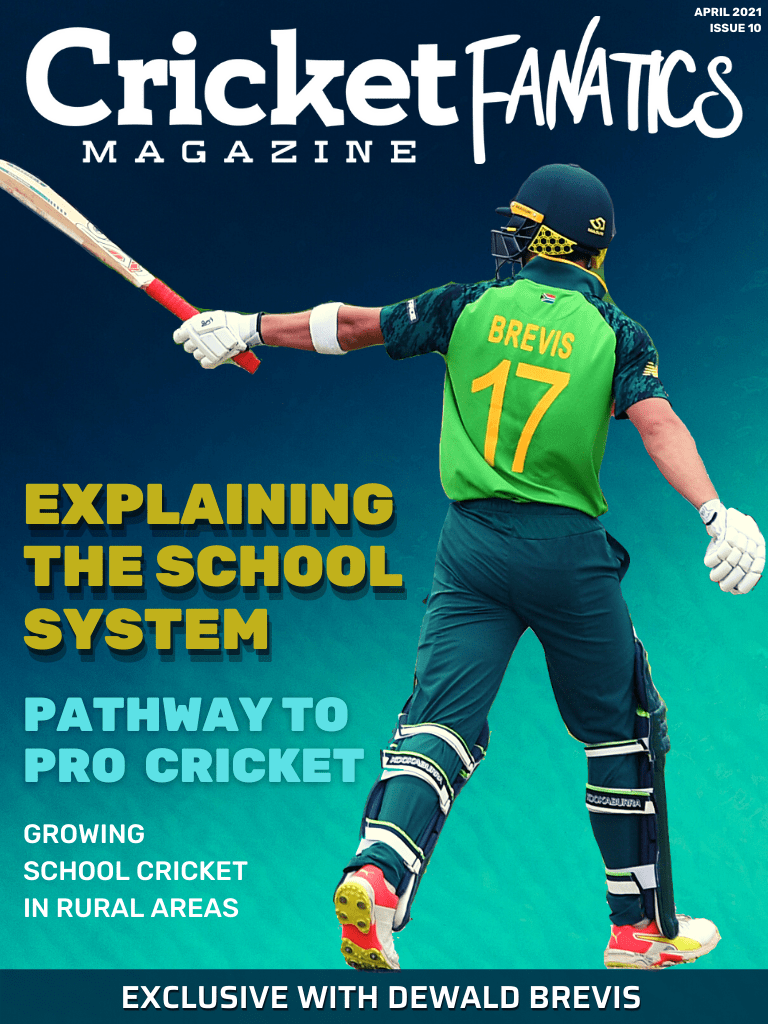
Table of Contents
EDITOR'S NOTE
The Schools Cricket Edition
Khalid Mohidin
Founder and Editor - Cricket Fanatics Magazine
In a month that was laden with action on the field, we decided to turn our attention to an important sector in South African cricket that doesn't usually get much exposure.
Despite the minimal exposure, it is such an integral part of laying the foundation of South Africa's next generation of cricketers.
We all need to invest time, money and effort to improve school cricket in the country and give more opportunity and exposure to those who are playing an active role in the development of our future generations.
From the moment a young kid falls in love with the game, to the point where they represent their country for the first time.
But there's a problem. Players from our rural schools don't get the same attention, coaching, investment and opportunities as those from Model-C schools.
We, as a publication, want to play an influential role in the promotion of those who are dedicating their lives to improving the pipeline of South African Cricket.
In this issue, we shine the light on school cricket.
We analyse where the game can improve in South Africa, what we can learn, and what needs to be done to help accelerate the development of youth in the country.
It's imperative that our pipeline gets a tunnelled focus.
So sit back, grab a beverage and a snack, and enjoy the first ever School Cricket Special Edition of Cricket Fanatics Magazine.
Sponsor a future edition by becoming a patron
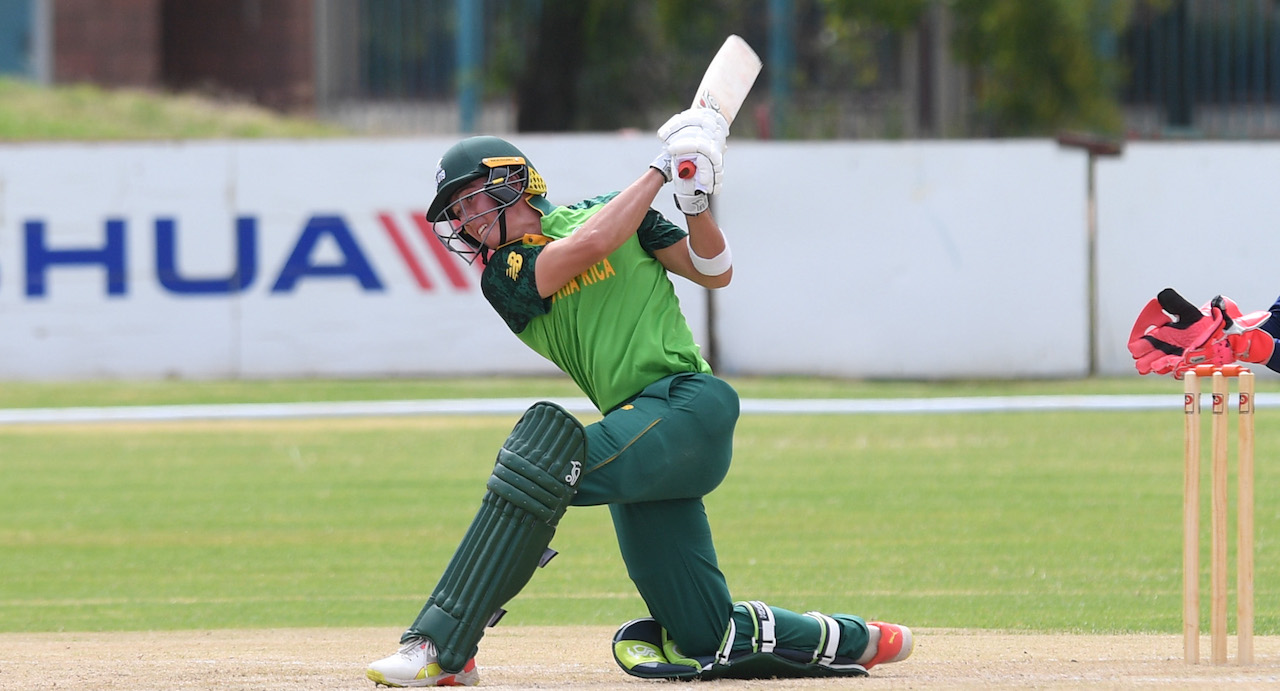
Dewald Brevis:
a Product of Dreaming big at School Level
By Khalid Mohidin
School cricket has been the source of talent for so many years in South Africa. It's an aspect of any top cricketer's life that can shape them and open up doors for them that most people can only imagine.
When you attend a top cricketing school, you always hear about the amazing talent that walked the school halls before you, and this can be an aspect that can motivate you to the brink of success.
Kagiso Rabada at St Stithians, Quinton de Kock at King Edward VII School, Gary Kirsten at Rondebosch Boys' High School, Jacques Kallis at Wynberg Boys' High School and Temba Bavuma at St David's Marist Inanda, are all successful products of some of the top cricketing schools in South Africa.
However, we don't often see the impact that these former players have directly had on a specific cricketer's career as vividly as in South Africa U19 Cricketer Dewald Brevis' story.
Currently schooled at Affies (Afrikaanse Hoër Seunskool), the alma mater of De Villiers, Brevis idolised the former Proteas superstar.
His admiration fuelled him to pursue a dream of following in his footsteps, to the degree that the similarities in the two's playing styles are mind-blowing.
Despite admitting that his hero is AB de Villiers, Brevis is now discovering his own alternative identity as a cricketer.
“AB de Villiers has always been one of my role-models; from a young age, growing up, I [used to] watch him play,” Brevis told Cricket Fanatics Magazine.
“I always wore my AB de Villiers shirt that my mother made for me. [I just love] the way he plays. He has a great mindset and he likes to entertain people.
“From a young age I was the same – I also wanted to entertain and put up a big show whenever I batted.
“AB is someone I look up to and if I can play only 10 per cent like him I’ll be happy. I’d love that.
“I met AB for the first time at Affies and we sort of had a relationship since then. I asked him then if I could play with the no.17 [shirt] and he said ‘sure, play with it. That’s perfect’.
“Growing up and having him as my role-model and being someone I really looked up to in the cricket world, the number 17 has always stood out to me,” he said, adding that he was speechless and “stunned” when he first met De Villiers at the time.
“It was an amazing experience – I was just stunned. I was just listening to all the stories he told and I was amazed.
“I was like a small child – I just couldn’t get a word out,”
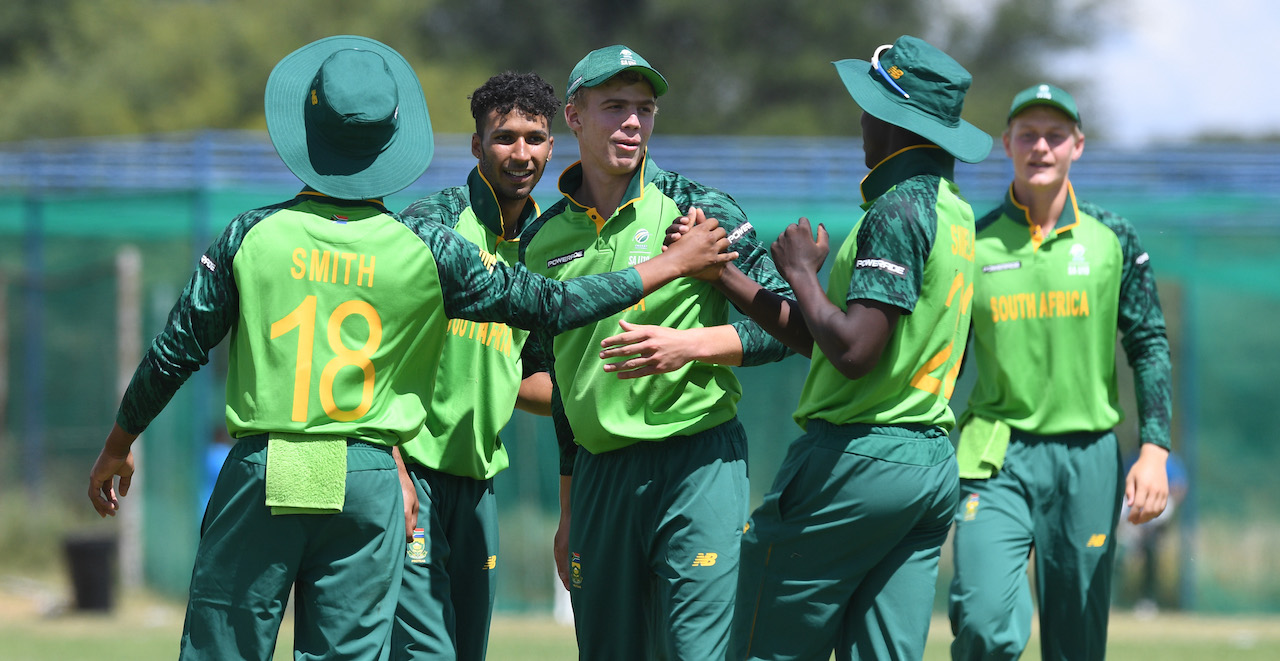
Schools cricket development needs ‘the right guys in the right areas’
By Marc Jacobson
Having a core group of coaches, each of whom focuses on different age groups, are elemental in developing cricketers at schoolboy levels, which is the same tune that was sung by various head coaches from around South Africa.
The Director of Cricket of Grey High School in Port Elizabeth, Michael Smith, who recently did duty as the batting consultant for Islamabad United in the Pakistan Super League, said coaches in particular “make a massive impact” in terms of development.
“At Grey High, our structures work really well and we have the right coaches in our different age groups,” Smith told Cricket Fanatics Magazine.
“Coaches have a massive impact on the development of the players at different levels. I think we have the right guys in the right areas.
“A lot of our focus goes into development, but a lot of work also goes into our skills and game-plan management.”
Smith, who had to return to SA from Pakistan after the PSL season was postponed mid-tournament due to an outbreak of the Coronavirus, said, as school coaches, that they strongly strive to hone the mental development aspect within the game.
“We have quite a big focus on [developing] soft skills and getting their cricket IQs up – [particularly] on how to deal with different situations.
“We have three level-3 coaches at different levels with our teams. We also have specialist coaches coming in,” he said, adding that these outsourced coaches focus on different parts of the game such as, for example, batting, bowling and wicket-keeping.
“It’s nice for the boys to be around other coaches, who can add value to them as well, especially when they’re still playing at a top level.”
Grey High, in particular, is also granted the adequate facilities needed to excel at the sport.
“We have 12 turf nets, 10 astro nets and five fields, which I think goes a long way because our top players are continuously playing on turf wickets,” Smith said.
“Concrete is great to do certain work on, but if you really wanted to be practising your skills you need to train on turf wickets.”
Smith added that Grey High’s coaching contingent are “huge believers” of developing the fundamentals within the game.
“[We monitor] whether the players can do the basics really well for long periods of time,” he said. “Particularly in the younger age groups, we focus heavily on techniques and basics.
“But we do also allow the boys to use their skills a lot. If we need to use a certain skill, then can we do it? If we need to play a reverse-sweep at U15, have we practised it and do we know when to do it?” He rhetorically asked.
“We do encourage the boys to learn and grow a bit, while helping them along the way.”
Smith also emphasized the importance that top-brass cricketing schools, such as Grey High, continue to play against elite oppositions from around South Africa.
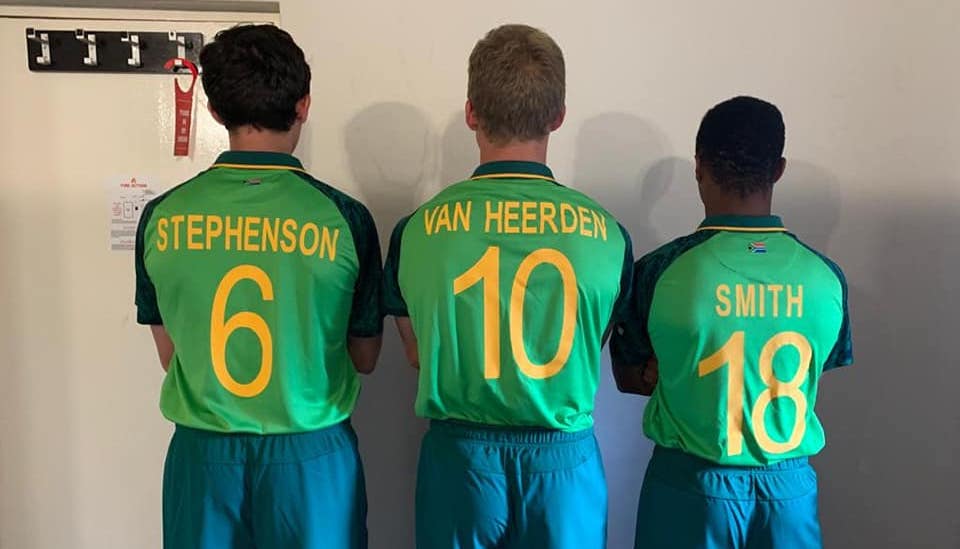
Speaking of such, Peter van Rooyen, the Director of Cricket of King Edward Secondary Vll (KES), one of the leading cricket schools in SA, said they “are very fortunate” to have top-quality coaches within their system.
“We have very good coaches who take quite a bit of pride in eye-coaching, which starts from a young age, from U14, all the way until the 1st team,” Van Rooyen said.
“At school, we also have Jimmy Cook (former South African and Transvaal cricketer), who runs his own academy, and he’s involved with the U14s as well. He sets a very high standard from early on to be able to develop top-quality players.”
Van Rooyen said their coaching set-ups are “technically equipped” to help out players using video analyses in terms of honing their techniques when it comes to bowling, batting and fielding.
“Video analyses are a big part nowadays to help players to perform and get better,” he added.
Mental coaching also remains a priority, he insisted.
“I’m hoping to bring a mental coach onboard at some point in the new season,” he said. “Players definitely need to be coached mentally and it’s an avenue we need to exploit.”
In terms of transformation, Van Rooyen said they “select purely on merit”, but with that approach, they still meet the various transformation needs and requirements.
“We are lucky that we’ve had players on merit [coming through] in each age group that we could select from.
“We do try our best to incorporate those players [of colour]. But in last season’s 1st side we had, at some stages, five players of colour, all of whom were selected on merit, which I was very chuffed about because I think that was the most in our history.
“At the moment we have about four players of colour playing on merit, and we see them as any other player,” he said, adding that transformation was not a core focus of theirs, as players of colour are naturally “coming through the ranks, every year”.
Van Rooyen said the school system in Gauteng, wherein KES is situated, is “relatively strong” and which is helped considerably by the presence of “top-quality boy and co-ed schools” in and around the Johannesburg vicinity.
“We get very high-quality cricket, week in and week out. Based on that, I presume this is why the Lions perform fairly well at the Cubs Week every year.
“There are no ‘Mickey Mouse’ games in-between. I don’t think we necessarily need to change too much.
“I just think we could play more games in Term 3 to get more cricket under the belt. That is actually the best time to play cricket with regards to weather.”

Jaco Zeeman, the head coach of Rondebosch Boys High’s 1st XI in Cape Town, said their school has laid the primordial foundation in which to propel young cricketers to the level needed for them to excel.
“We, at Rondebosch, have a very strong cricket culture and we have top facilities at the school. We also have teachers and coaches who are all passionate about developing young cricketers,” Zeeman said.
“We also attract top cricketers. Success breeds success and the more people who find out about Rondebosch’s cricket, the more cricketers would come to the school, which is sort of a self-fulfilling thing.
”Zeeman added that several of their players play provincial cricket, while many of them get private school coaching, which provides great value to the various players’ identities.
“It sort of answers the question: What does this kid need right now to be successful?
“They would follow a broader programme of development, such as in junior cricket you want the boys to know how to play the short ball and then in high school you want them to be able to play spin properly, because there are different strategies against spin.
“You want the boys to streamline their approaches between their private coaching and provincial coaching to clear their minds. It’s a two-fold thing.
”He added that this was their “biggest job at Rondebosch”, because the kids’ minds tend to become “cluttered” from the different input they receive from the media and private coaches.
“There are fundamentals we like to focus on, such as balance, contact points, set-up positions and pressure.
“We want these kids to focus on one thing at a time, while getting a clear [understanding] of what is important now.”
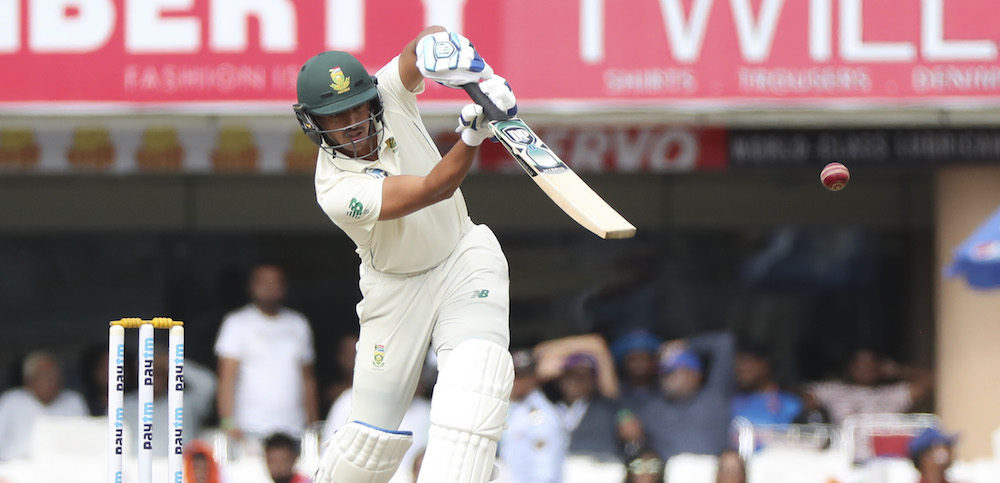
With regards to transformation, Zeeman said the school has formed “good relationships” with some businessmen and old boys to help them create more opportunities for young, disadvantaged and talented cricketers alike.
He added that the Western Province Cricket Association is also “fully supportive” of their initiatives in that space.
“We’ve managed to get quite a few cricketers through the system. But for us, it’s important to give these kids the coaching and the [necessary] support around them in terms of tutors, as well as academic and mental support.
“This will mean they’ll develop in terms of cricket. It’s definitely something that’s part of the Rondebosch focus.”
Zeeman added that it was important, not only for Rondebosch, but for WP as a whole, to “continue to develop coaches that infiltrate the love for cricket, while finding ways for kids to compete”.
“There needs to be synergy between the schools, the union and private coaches, because [at the moment] they all seem to be operating in their own silos.”
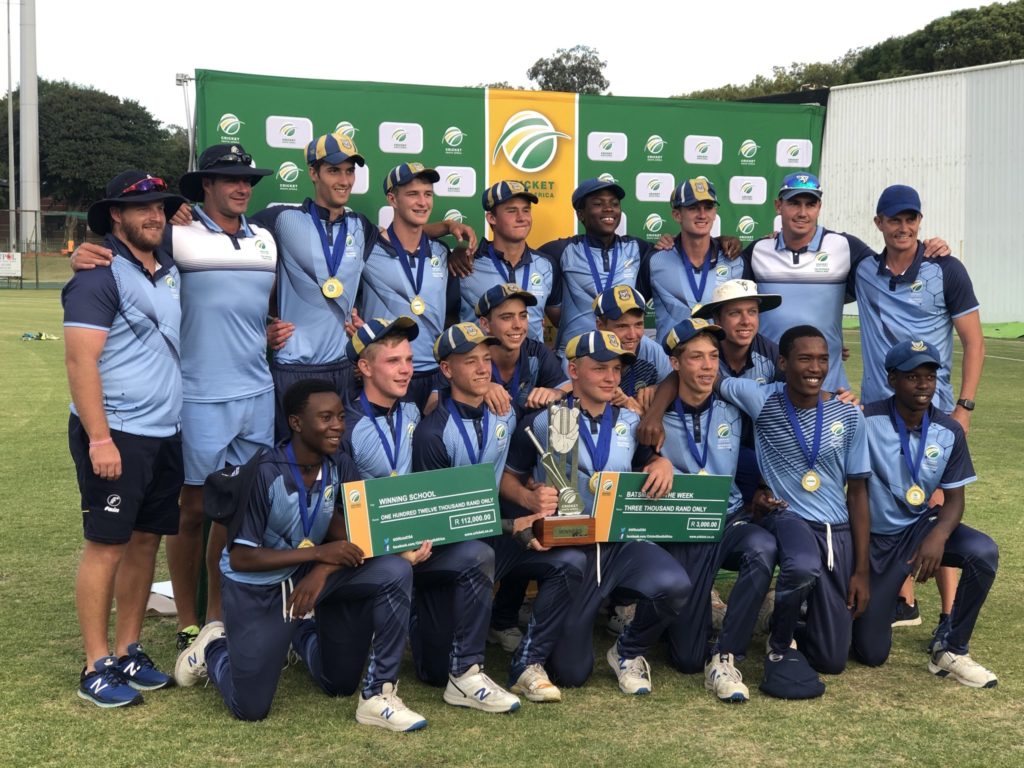
Afrikaans schools tend to encounter slightly varied challenges in terms of meeting the basic requirements within the sport, as opposed to what their English counterparts may experience.
The Director of Cricket of Hoërskool Waterkloof in Pretoria, Cobus Pienaar, said that in terms of transformation they “strive to get as many players of colour in our system as possible”, but that it comes with its different obstacles.
“It is very difficult with the language barriers, as our education at Waterkloof is only in Afrikaans,” Pienaar said.
Another challenge is that they aren’t equipped with the necessary essentials.
“We have a challenge with fields and the availability thereof,” he said.
“Most Afrikaans high schools didn’t make enough provision for cricket ovals when they planned the layout of the school’s premises.”
He also emphasized that schools cricket in the Northerns Cricket Union is vastly competitive and that this piles on more pressure on young players to perform.
“I believe that if we don’t place such a big importance on the leagues, then it would allow the kids to play with a bit more freedom.
“We try to educate our players to help them realise that their performances don’t reflect on their personalities.
“We want to use cricket as a tool for them to be great human beings, first and foremost.”
Pienaar also insisted on garnering a sense of self-belief within the players at their school, which included developing “sound techniques”, while gaining a “good understanding of those techniques”.
“The reason for that is, because if things don’t go according to plan, and they are playing elsewhere, they would know what the key fundamentals are to fall back on.
“We feel that certain fundamental skills should be developed at certain age groups.”
He also echoed the philosophy of having the right guys doing the job and that the school ought to create this mould of having a “core group of coaches who work with different age groups”.
Get More Clients With Cricket Fanatics Magazine
Cricket Fanatics Magazine has the visibility, infrastructure, expertise and toolset to automate your marketing and branding.
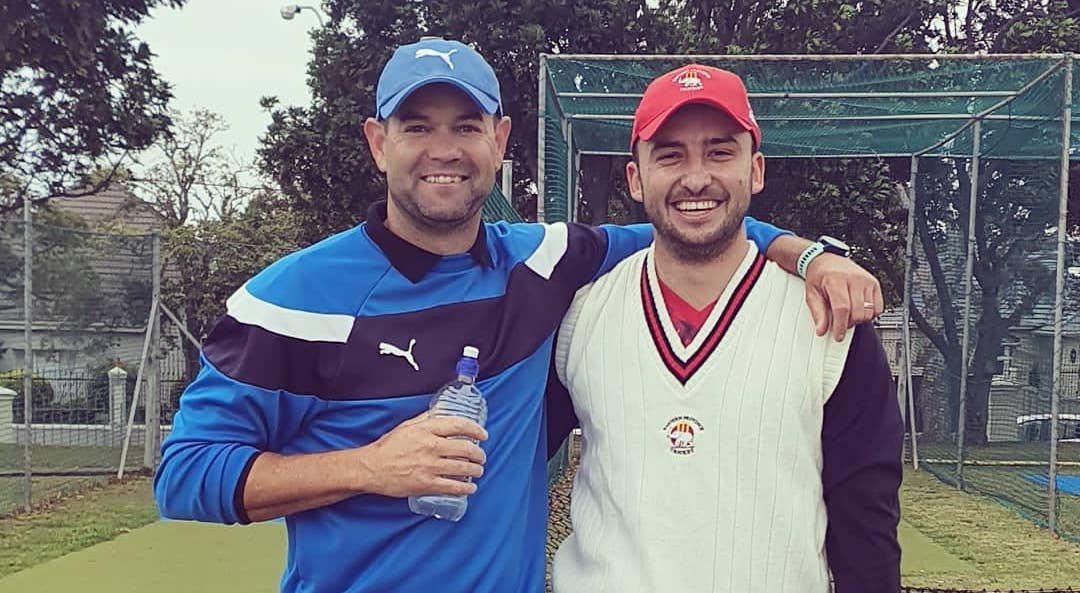
Strategic Intensity: Coaching age-group cricketers
By Chris Chiwanza
Two things: skill and temperament. The two are so integral that for one to grow into a successful cricketer, they need both. Having one of either is just not good enough, and this is why most junior coaches go for strategic intensity when training both.
Players from different age groups require different levels of mental and technical coaching. For instance, Michael Smith from Grey High says that despite coaching youngsters the same aspects of the game the intensity is staggered by age group.
So, while Under-14s can have the same content as their older counterparts, it is imparted at a very fundamental level. This is because the most important thing at that stage is building understanding versus mastery.
Mastery can only be born out of understanding, and understanding can only come from developing a firm grasp on the fundamentals. Therefore the first step is about making sure that they have the basics in place before anything else.
"Everything we do with our seniors we do with our juniors, but on a basic level. That includes helping them to develop match-awareness and improved decision-making. But we do this on a very basic level," Michael Smith from Grey High revealed.
"We can't inundate the guys with too much information because we might end up with players with scrambled brain syndrome."
And even then, even this early on, coaches to do not have blanket, all-encompassing models of instruction.
In fact, it is at this point that the journey of understanding the individual players begins, as their future success depends on their journey as a player and not just as a part of a team.
If anything, their success within the team depends on whether the coach or coaches managed to get through to them as an individual, before trying to get through to them as a team member.
"Players develop at different stages. Some youngsters show mature attributes as early as 13 or 14 while other reach that point at 16. One of the ways to do this to make sure that the boys do not focus on whether they develop as quickly as others is by reminding them that a high school career is a six-year journey."
MINDSET TRAINING
In one conversation that I had with ex-Proteas star Farhaan Behardien, I asked him how he deals with the pressure to perform and how he developed the ability to deal with pressure.
Fudgie, as he is affectionately known, pointed to his development as a junior player as the foundation to his ability to deal with pressure and the resilience he developed since.
And when I broached the subject to Smith, he shared they have mental models that they show the players on how to deal with the pressure.
It is these models that create the foundation of their training of youngsters in developing the right temperament that will help them succeed.
In addition to their models, Michael Smith and his colleagues are consistently training players to develop the ability to perform in the moment, to stay in the moment.
They do this by reinforcing the idea that the most important part of the the game is the next seven seconds.
By doing so, they help them fend off distractions and prevent them from focussing too much on what happened in the past or what might happen in the future.
"We also speak a lot about pre-game and pre-ball routines. A lot of how a player handles pressure during the match depends on these routines," said Smith.
"We also train them in breathing techniques on how to slow your mechanisms down when the pressure hits."
Another thing that either sets up young players for either success or failure is their ability to deal with the ups and downs that come with playing cricket.
Their ability to deal with purple patches and stay grounded, is just as important as their ability to bounce back from dry spells. Their resilience plays a part in their development and future success as players.
For instance, sometimes when a player is doing well, there is the risk that they might get ahead of themselves. This might lead to them neglecting to focus or follow through on the basics that led them to the present moment.
Thus, Michael Smith and his colleagues are consistently doing their best to help them move on from past success to help them focus on the next game. The next one is always more important than the past game.
"We also try to reset every Monday or after every game to make sure that we are still all our boxes from our game-plan aspect, from a technical preparation, from a mental preparation, so that come Thursday or Friday, if we ask a guy are you ready to play? They have to be able to answer that positively."
Not only that, but Smith and his colleagues take purple patches as opportunities to teach them more, push them further ahead in their skill levels.
Thus, when players are doing really well, they try to challenge them to do more in their training and their preparation. By doing so, they push them out of their comfort zones and ask them to succeed in unfamiliar territory.
DEALING WITH FAILURE
When it comes to dealing with failure, Smith is always reminding his players that cricket, especially batting, is based around failure. Batters fail more times than they are successful.
Similarly, bowlers will not bowl a wicket-taking delivery with every ball, and might go for runs before they get a wicket. Sometimes they will go for an innings without a wicket.
"We try to get them to understand that the world's best players only succeed around 40 or 50 percent of the time in their lives. So we try to get them to understand one or two low scores doesn't mean anything if you do well at other times. We encourage them to try to base themselves on performance in 10 innings," says Smith.
Besides making the runs or taking wickets the coaches also try to mould youngsters into well-rounded players, so that they can also impact the game in various ways, including out in the field. That way the players still feel that they had a successful weekend, even if they did not do well with the bat or ball.
A critical part of a player managing to bounce back from dry spells is that they have feelings of psychological safety.
As Smith says, it is not what the coach can instruct a player that will pull them up from a slump, but what they can do with the support of the coach. And it all comes from them developing trust in themselves, which can only happen through the coach allowing them to take the lead.
Another thing that Michael Smith does in training with struggling players is to give them small wins. He sets up a lot of simple drills at practice, and these drills allow the players to regain confidence as they accomplish them.
TAKING THE LEAD
Allowing players to take the lead is not something that most coaches reserve for times of crisis. It is, in fact, an integral part of coaching. When Michael Smith shared this with me, I couldn't help but draw parallels with what Steve Smith shared in his autobiography.
The Australian star shares that since childhood, his best coaches have always let him find what works best for his game. All they did was help him on the journey.
This is very important when it comes to gameplan management, which Smith says is the core of coaching youngsters. Gameplan management is very individual, therefore the coach has to really understand the players as individuals before they can start trying to help them to develop their strengths and build a solid gameplan.
Thus, it is not the coach's duty to instruct them, but to guide them. A player must have control of their game. The coach has to be a sounding board. Gameplans will adjust and grow as they develop.
"I think we talk too much and instruct when we should guide and mentor," he says.
The result is that Smith and his colleagues have training programs in place that help players to develop by discovery, and the coach is only present as a trusted mentor.
Help the player develop through learning, not instruction. This creates the right environment for a player to thrive.
And this can only succeed when coaches have the right relationships with their players.
"The most important part of coaching is your relationships with your players. Understand their fight or flight instincts, understand their background and how they react to events around them. This all comes through building solid relationships," Smith says.
What this means is that the coach develops different forms of language, cricket language, they use with each player.
Like every coach, from age-group to semi-pro and international cricket, will tell you, what you say, how you say it, when you say it differs from one person to the next.
You can't talk to two players in the same way, even when you are talking to them about the same thing. They are all individuals and react differently, hence the need for strategic intensity.
Advertisement
Ezra Poole's Online Wicketkeeping Academy
Learn how to Master The Craft of Wicketkeeping Without Having to Hire a Full-Time Personal Coach.
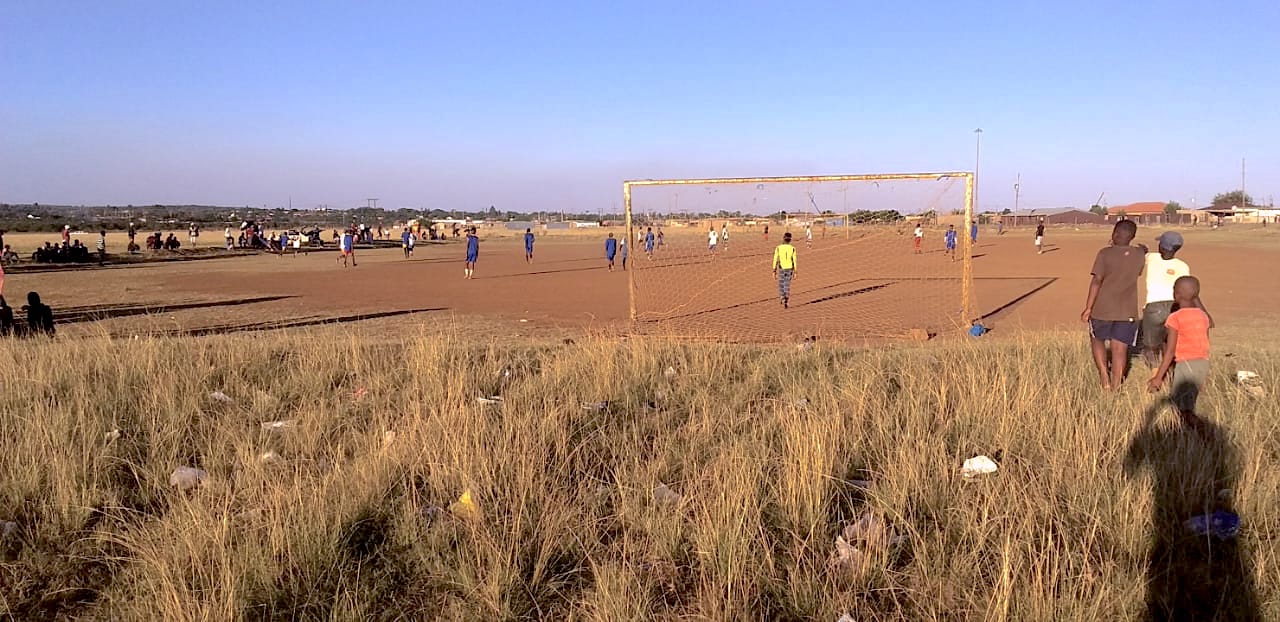
cricket losing battle against soccer in rural areas
By Obakeng Meletse
While many cricketing schools are just heading towards the end of their cricket season as winter fast approaches, a larger number of township rural schools are not yet even on their mark as they get set to witness yet another season going past without any bats meeting balls, no catches going to hand and more un-noticed talent is going to waste.
A large number of rural primary and high schools have zero cricket played in their schools and more concerning is the fact that there is also a lack of interest or any knowledge of the game by kids and sports facilitators that are also full-time teachers and part-time coaches.
It is a known fact that in rural areas, kids are born and soon after, they are kicking the bigger round ball in the dusty streets, in every corner and every ground from a very early age. A lot of factors contribute to this.
The access to soccer on free-to-air TV over the years has been plenty and therefore interest is created easily. All you have to do is grab a ball and you’re good to go!
It also helps that everyone understands the game, loves the game and there is plenty of support available, so why would you even consider running in bowling and hitting balls all day when you can get your work done in 90 minutes?
Schools traditionally have sporting codes that they participate in yearly for the different seasons they have. Township government schools mostly have netball, athletics and soccer. Government schools in Suburbs are more all-round with more sporting codes to add to those already mentioned.
There is an obvious gap and imbalance when comparing both schools, the balance the public school in suburbs has for education and sport is more noticeable when a child from a rural area has to first focus on books then maybe might play some sports, further decreasing their chances of trying other sports that are foreign in their area.
Transformation in South Africa might not just be in a fight to promote the game and give everyone a fair chance but is also is up against changing the culture and tradition and at the same time changing mindsets.
It gets easier for schools in suburbs to have cricket and somehow have consistency as even their coaches played the game when growing up.
The same can be said for a kid from the townships, soccer is the more popular sport and even if kids did want to start playing the game of cricket, the lack of coaches and knowledge about the game continues to be a huge curveball.
Soccer could just be the biggest obstacle in rural areas and townships or could there be better management and planning?
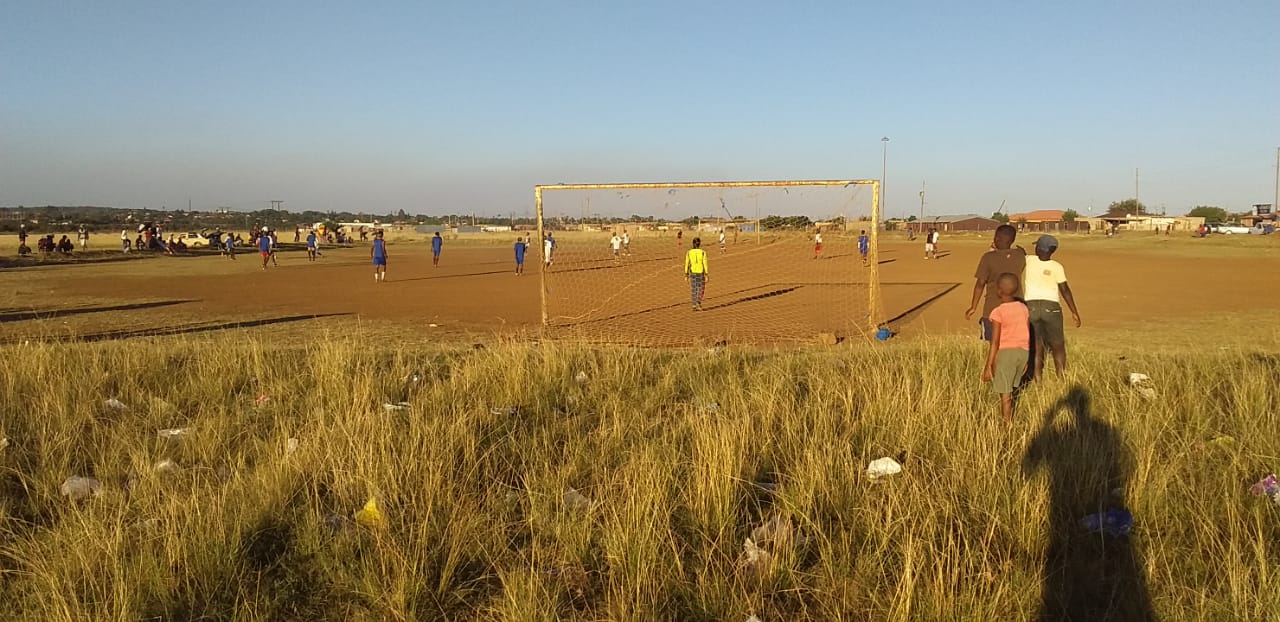
Cricket Fanatics Magazine visited schools in Fochville, a small town west of Johannesburg and also the neighbouring township (Kokosi) to find out more about their cricket and the structures they have in place.
Robert Smith is a cricket coach at Hoerskool Fochville a high school in Fochville.
Over the years, the level of success has been more visible for government schools in suburbs, and even though they don’t have much to write home about in terms of success, like AFFIES would, consistency with getting kids to play cricket is there and interest is built and therefore creating options to work in the future.
“We basically do everything ourselves, we have a few groundsmen that look after our grounds and we also share grounds for our rugby and cricket games. We are a team of six cricket coaches that are looking after 4 teams, we have U15 A-team, U15 B-team, U19 A-team and U19 B-team,” said Smith.
“As teachers, you only at a school and you basically only have a chance to work with your own children, we need a guy as a scout from outside identifying players for us and telling us about the players and getting them into a developmental programme as they have a lot of potential.
“The problem again is that when the scouts do come, they only scout at primary level and they take the talent that they get to bigger schools than us and they get offered scholarships and that in a way is a problem as we, as a high school also need to get more eyes in to also develop as an area and school.”
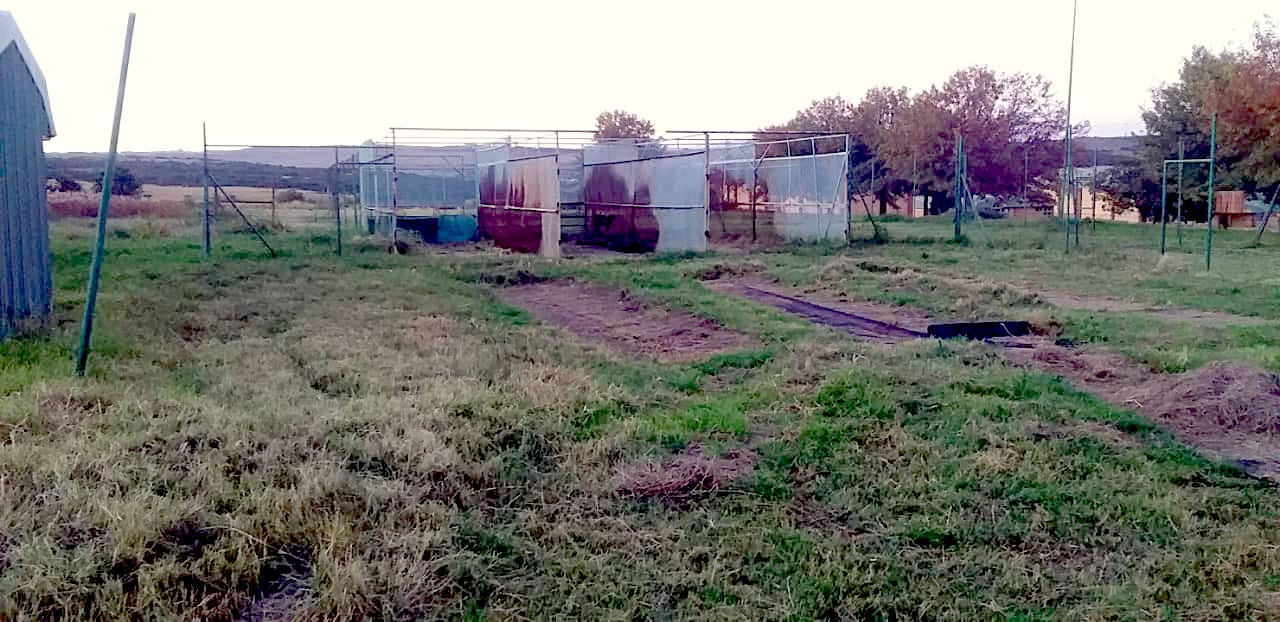
A question that must be asked is: what are these schools doing that is different from schools in townships?
They are also government schools, they have other sporting codes, Teachers are responsible for academics and also make time to attend to their sporting responsibilities during their spare time, and yet they always manage to have cricket teams that are fully functional every season.
“Kids in rural areas are not really playing any cricket, and I think the KFC mini cricket must be widened more to reach such areas, as I recall that was a programme which got me interested into playing the game, these days there’s not enough being done to reach out into every area so that kids can get to know the game and start playing the game.
“We got the Hubs, it doesn’t normally take place at a school but they take maybe seven schools and pick players from those schools and they make a Hub, it’s basically like a club and all the guys go through it and that in a way helps us to get competitive cricket and also get our players out there to be seen, but the level of cricket being played there requires some form of game time under your belt,” concluded Smith.
A reality for a few in a small area could be a reality for many around the country, if kids have to move to schools in suburbs or traditional sporting schools to get to play a game of cricket the country has a long way to go.
If only the top schools in the country will keep on producing the top talent, then there could be more players coming from townships.
How are targets that go with quality selection going to ever be maintained if those being transformed are not even playing the game?
The goal of transformation requires the buy-in of most rural schools and the underprivileged schools as the kids in these areas could be the next superstars. But the net needs to be widened by CSA to get more numbers.
Sporting coordinator at Reakgona Primary School, Xolane Duma, says the school and the kids are actually willing to play cricket but the gap in knowledge from the teachers' side is a problem and nobody else in the community has come through to try and assist with training kids to play the game even after all their attempts to get someone to assist.
“We have the equipment readily available, we were lucky to get the equipment from some of the neighbouring schools, a few school sponsors and also the department of education.
"The equipment is there but it doesn’t help to have it just so it gathers dust in the storeroom.
“If I could, I would do something about it because as the school's sports coordinator, I like it when kids do well but a lot goes into the game of cricket and I wouldn’t want to teach kids something I’m not sure of myself.
"I am a sports coordinator but a soccer coach, I wish I knew cricket but I, unfortunately, I don’t.”
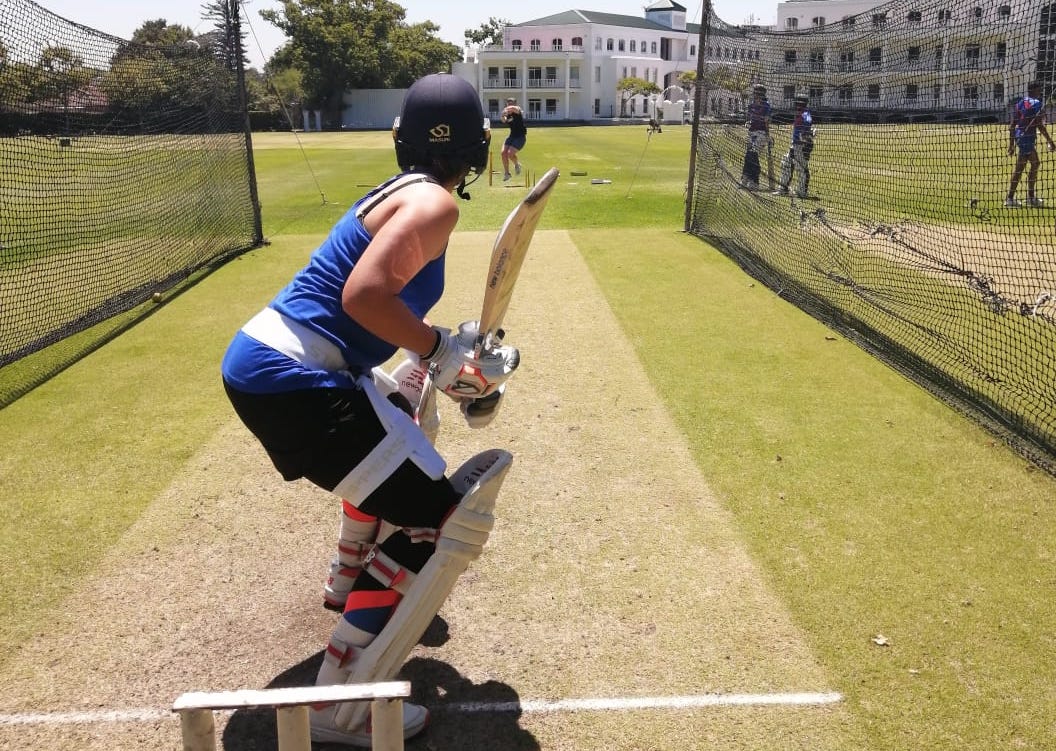
Q&A: Kayla Reyneke
By Jessica & Janine October
How was I introduced to cricket?
I was not formally introduced to cricket but when I was a little girl, my mother used to give me plastic balls to play with, or sometimes small round objects. I started playing cricket in Grade 1 with the boys of my age and my coach (our school headmaster) told me to never stop playing. I guess you can say he introduced me to cricket.
As a bowler what was your best wicket ever taken?
No specific stands out, but every wicket is important to me, but on my second WP Tour, I performed well and took 6 wickets for 24 runs in 4 overs. That made me proud and was one of my best performances till today.
There has not been anybody specific that I’ve bowled out so far, but the U16 Tour stands out for me.
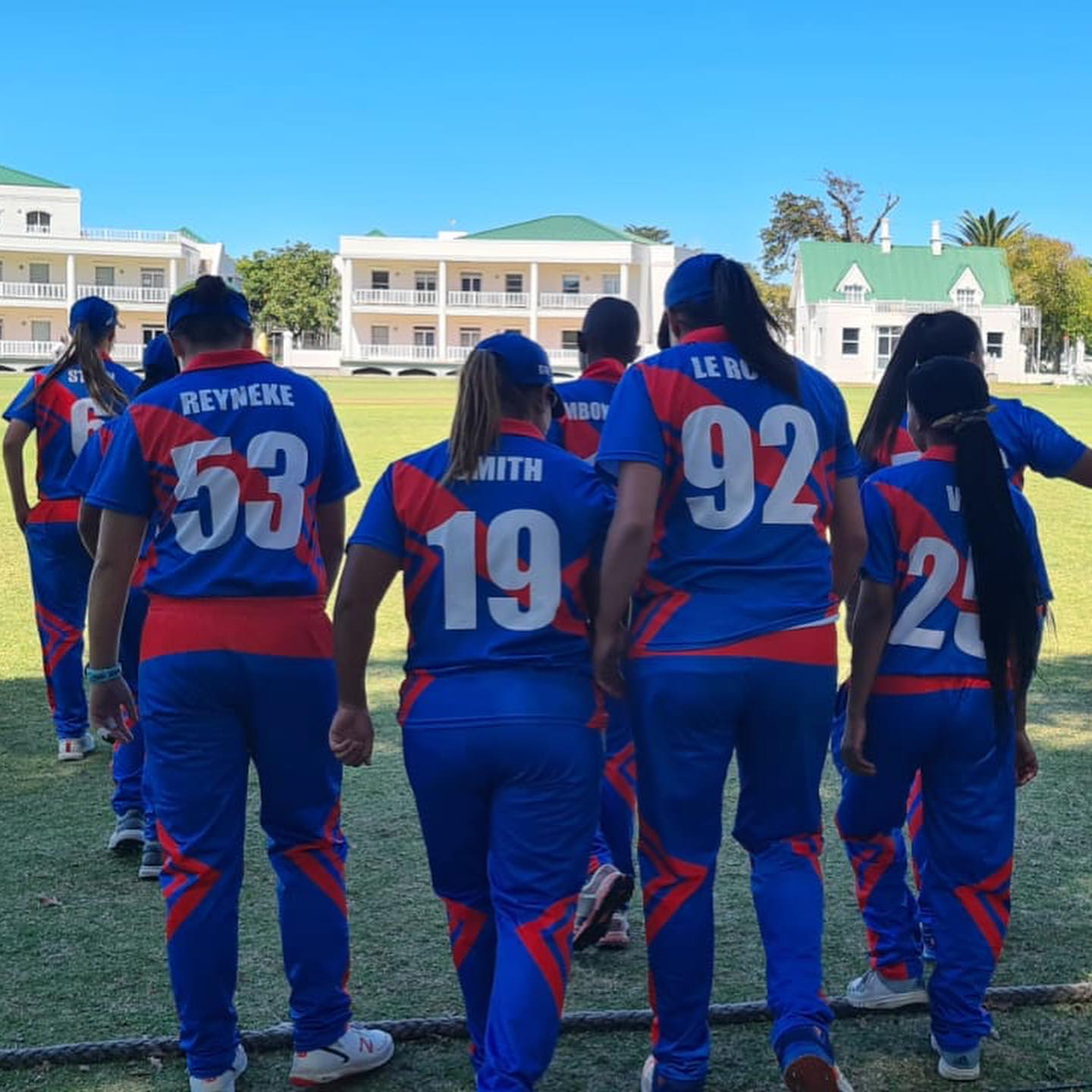
Favourite cricketer?
Andrie Steyn (we fondly call her Anna) is one of my favourites, but Laura Wolvaardt also stands out for me.
The first game I played for WP was a friendly against Maties (I was 14 years old) and I played with Anna and we were batting together. It was very special for me and Anna knew how to keep me calm, as it was quite stressful for me.
Debut for WP?
I was so nervous, and my heart was beating so loudly, I thought it was outside my body, but at the same time I was so excited to play cricket again and just doing what I love. It was such a privilege for me to be there.
Daily routine?
My routine is varied, but a usual day is normally:
School till 14h30
Gym: 16h00 – 17h00
Homework: 18h00 – 20h00
Bedtime: 21h00
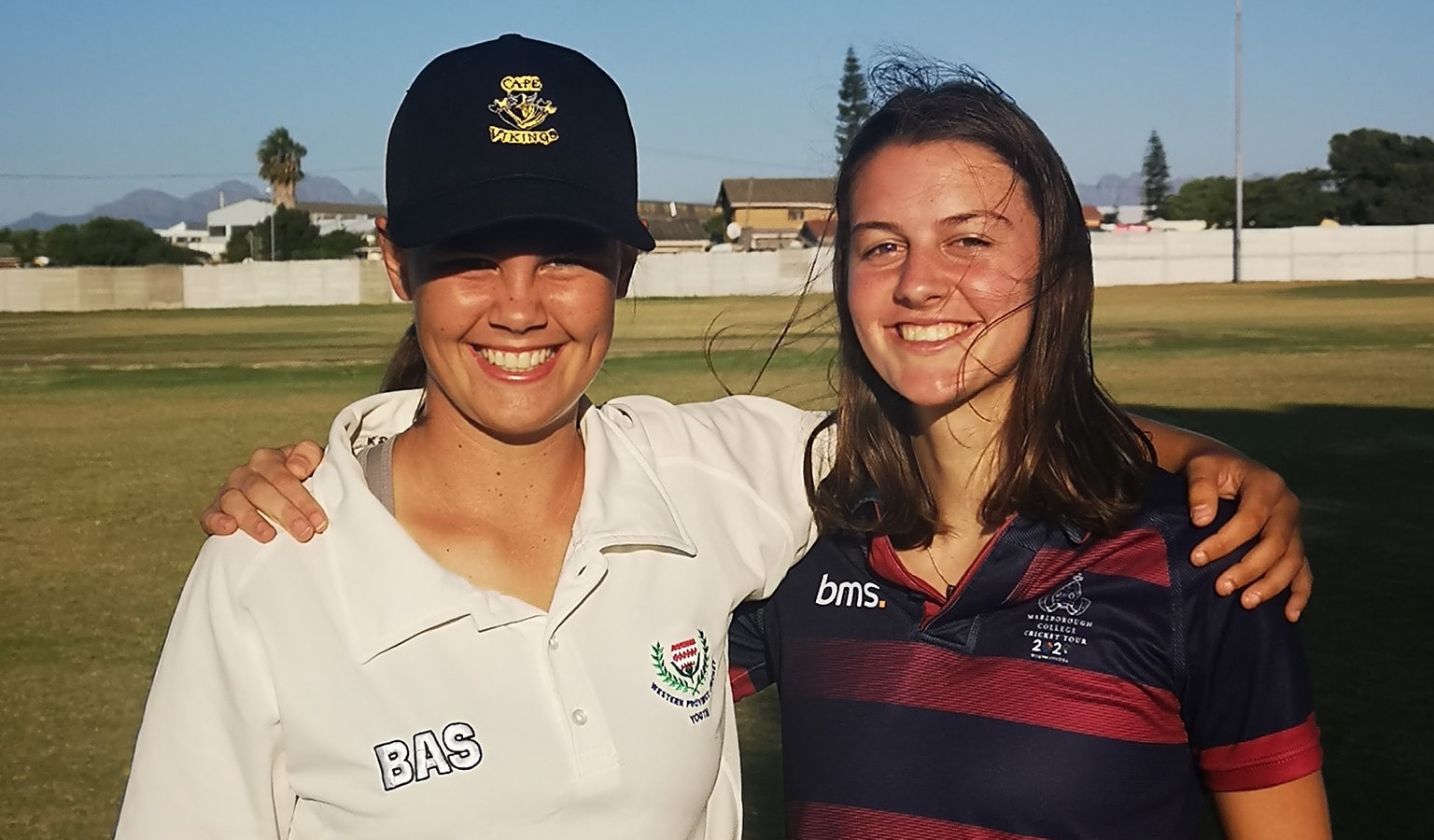
Similarities of provincial/school level coaching?
My experience is that school cricket is not taken very seriously, and I usually must play with the boys, which is quite different, as boys and girls are different, physically and emotionally. A lot of jokes are usually made and there is not serious time for practising.
Provincial cricket is quite serious in terms of commitment to exercise, practise sessions and team spirit. The intensity is quite high, and we work hard, but we do have our relaxed moments when we joke and laugh, but there is a place for it.
What needs to improve in girls school cricket?
Girl’s cricket at school level has never received the attention it deserves. I am a very good example of that, as I always had to and still have to play with the boys.
I personally feel that the boys and girls should be treated the same in terms of facilities, coaching and game time.
Motivates you the most?
Definitely my mother. She has been with me from day one to help, support and guide me. There are days when I do not feel like exercising and sometimes I am mentally and physically tired, but she always reminds me what my goals are and what I am working for.
She is most definitely my biggest supporter and she always goes the extra mile to ensure she is always there for my matches. As a single parent, I know it is not always easy for her, but she gets it done. I cannot thank her enough for all the encouragement, sacrifices and support over the years and coming years, as I know she will always be there. I love and respect her very much.

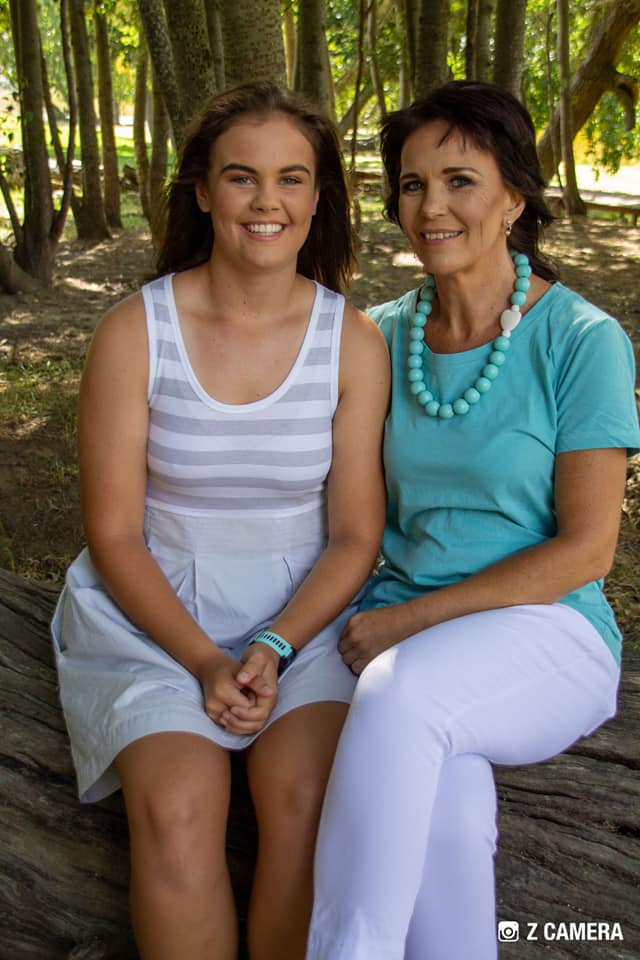
Coach Claire is also a very important role model to me. She always motivates me and we have a good relationship with each other. I am comfortable to talk to her about everything from on and off the field.
She knows what my personal goals are and drives me to always work hard and to pay attention to the small things that can make a big difference as a cricketer.
Since coach Claire involved me with practice sessions with the seniors, it made a difference, and I can see the improvement in my game.
My batting, bowling and emotional readiness have improved a lot since being with coach Claire and coach Gaby. I can see the growth in myself when I compare it to 2-3 years ago.
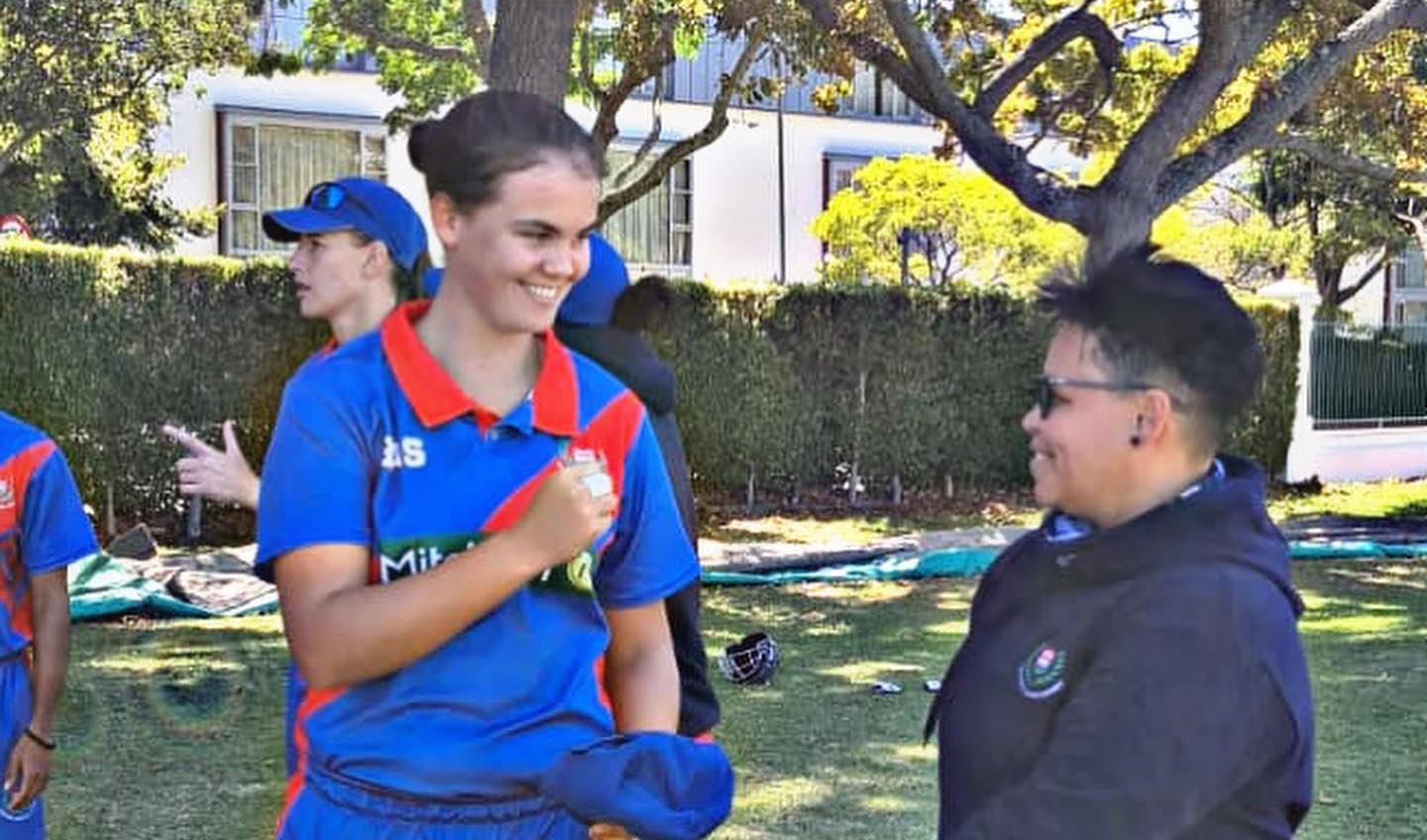
KFM Red Jersey
The KFM Red Jersey represents exceptional overall performance on the day.
The MTBS is for high schools that compete annually against each other for trophies in athletics, spirit and flashes trophies. In 2019 at the MTBS, I achieved a record distance of 47.06m [for javelin], which was 9m further than the previous record which was also my new personal best.
I received 2 trophies for:
– Best overall achievement
– Best overall achievement for girls
After MTBS, I received WP for athletics and I represented the Western Cape at SA’s for Girls U/15, where I won with a distance of 45.97m.
Then Covid hit us, and I had to pack my javelin away.
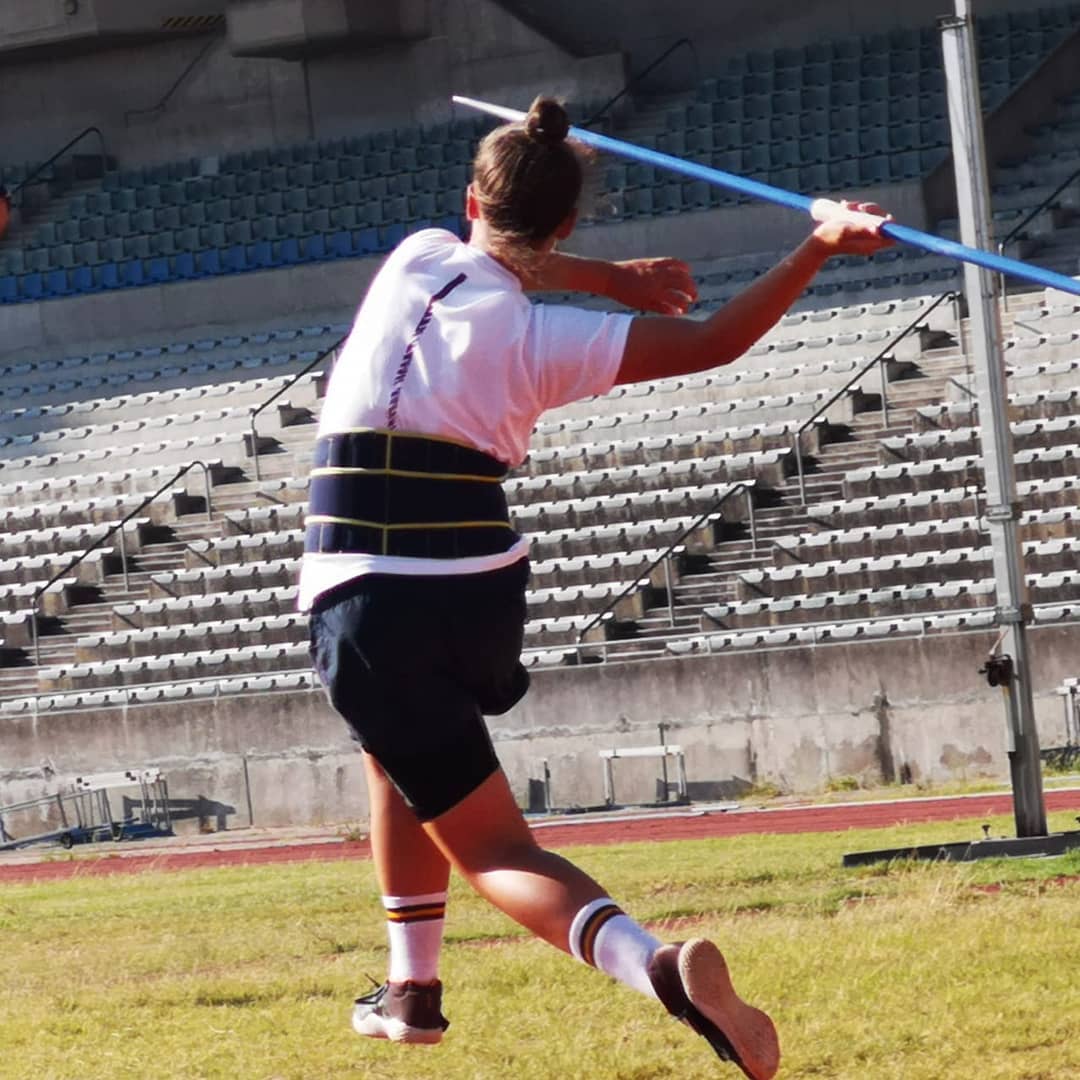
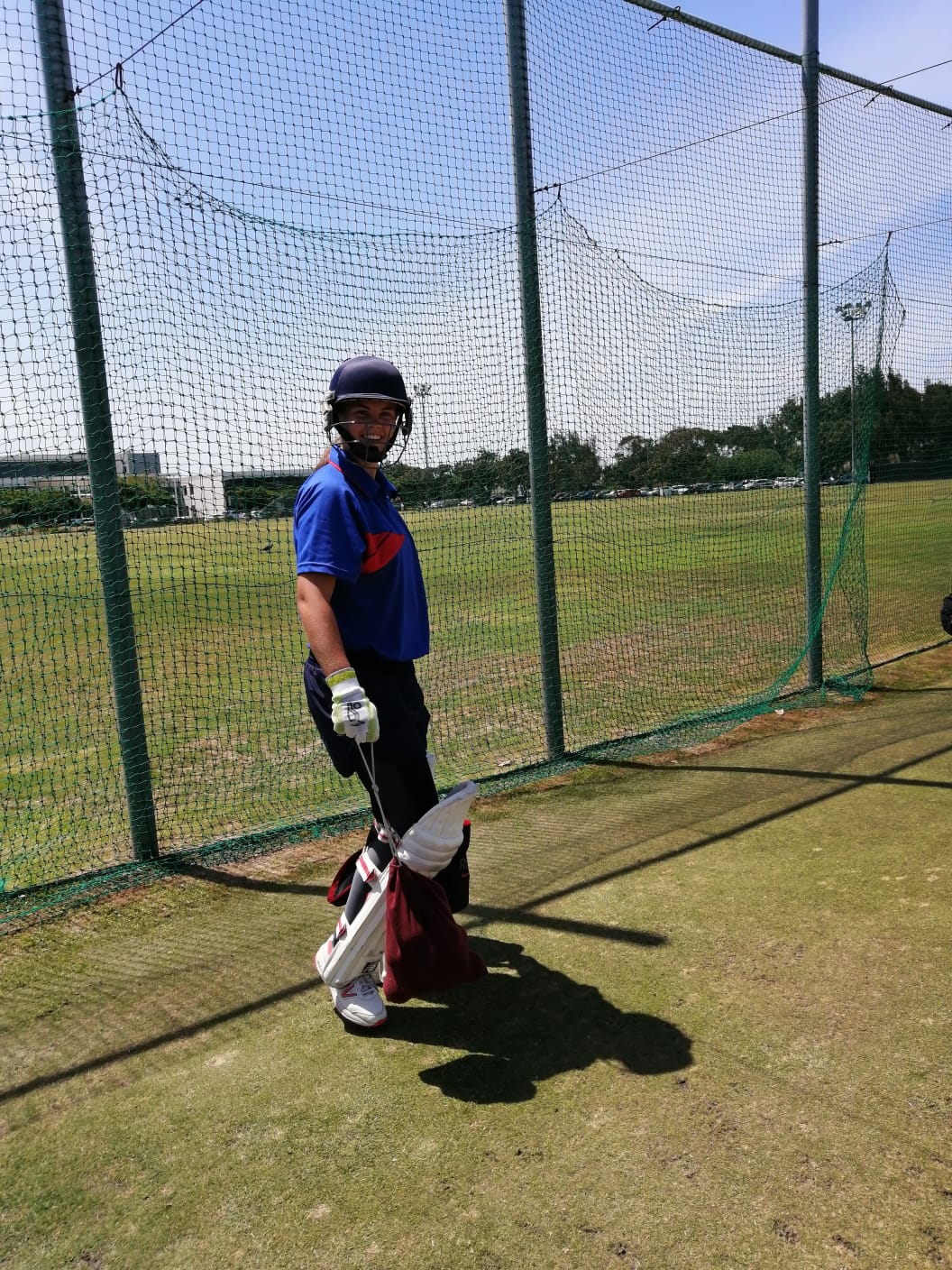
Lockdown – how did you stay in shape?
At the beginning of lockdown, I was very motivated, and I exercised daily, but honestly, it became more difficult around August, September last year. I hit quite a dip and lost my motivation, but when we were told in November that we could start playing cricket again for WP from January, I started exercising immediately.
Football
I am not a big fan, but if I have to support a team, it will probably be Liverpool. They seem to always be at the top of the log.
Favourite food
My favourite cheat-meal is Debonair's pizza or Burger King. I also love my Chicken wraps.

3 favourite series?
– The Big Show
– Family Reunion
– Outerbanks
What do you do to relax?
I use my off days at home and listen to music and watch some Netflix.
3 songs – playlist?
1. We are young - Beach Bag
2. Bang - Joe Fletcher
3. Dior - Pop Smoke
Ps. Also love my Afrikaans boere music.
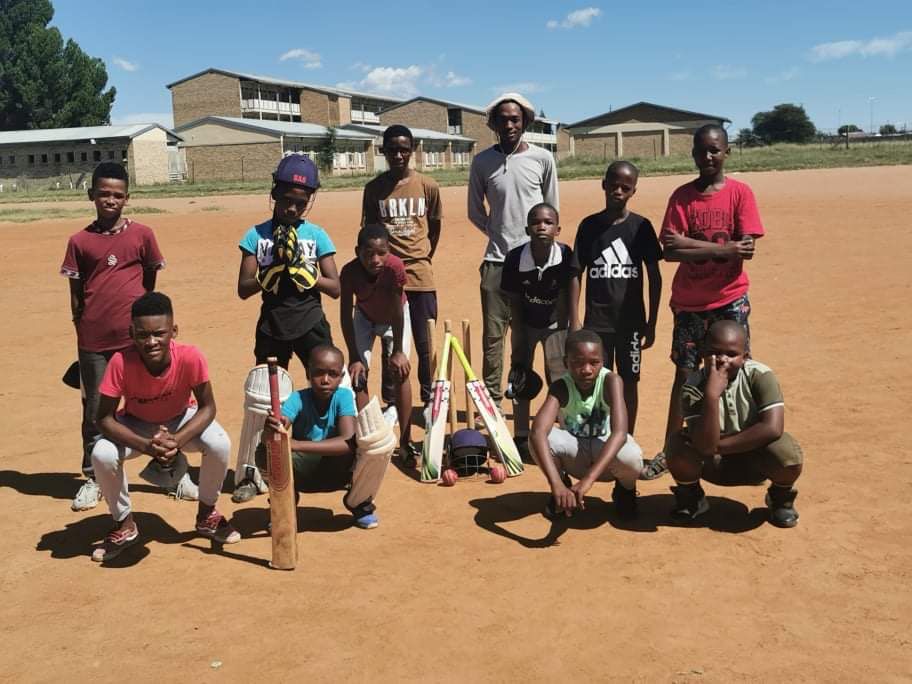
Improve the Standard of Cricket in Rural Areas
By Lubabalo Skhosana
The first thing most people do before they make an opinion on the current talent pool in South African cricket, is to analyse the state of schoolboy cricket.
One may wonder why but the answer is simple, schoolboy cricket has been for years the centre of production as far as talent is concerned even though the powers have only recently started shifting towards schools that have always come second best.
Are the powers shifting in the right direction?
One may argue that yes, we are now seeing schools that have always played second fiddle, start to produce cricketers for various levels of cricket.
In one of our previous editions, we had a look at the gap between our schools and the professional level. That gap alone is proof that even though the powers seem to have changed a bit, they are far off from where they need to be.
Cricket in rural schools is as good as non-existent because, for them, there is either little to no recognition or facilities. Many schools in rural areas do not even have cricket as a sport which is sad because we are a country that speaks of transformation and the success of transformation relies heavily on some of these forgotten areas and school. The success of transformation relies on rural schools too.
After speaking to several people who are directly involved in cricket in rural areas, it was very evident that the issues that rural areas are facing in terms of cricket are quite common from different parts of the country.
There is a serious lack of resources for schools in rural areas and this sadly something common in our country that rural areas tend to be forgotten when it comes to resources and other essentials that people from privileged areas tend to get.
From resources to the necessary facilities and qualified coaches. Most of the time in rural areas you find that one or two of the cricket teams that exist are coached by someone or people who are only doing it because they love the sport and are not equipped with the required knowledge and or skill.
“What we want is more resources via money and human resources capacity building, I don't just want more cricket players in the community we need more formal coaches, accredited scorers and umpires so that cricket can be played right at a grassroots level,” said Aubrey Odirileng Mosepele known also as Rezo.
Rezo has his own cricket club that he established in Schweizer Reneke in North West. He could not stop emphasising the importance of resources and facilities needed at rural schools.
The rural schooling system must also be improved in terms of cricket as that is the only way a kid from a rural school can compete with those who attend Model-C schools.
In our bid to transform the sport and even the playing fields we need to make sure that things are evened out from grassroots because that is where it starts.
With the domestic system/structure also undergoing some changes that will see club cricket become slightly more important than before, it will also play a big role if schools in rural areas can provide club sides with some young talent.
Speaking to Mr Lonwabo Haya from King Williamstown about the importance of schools being able to provide clubs with players he went down memory lane.
“When I got to high school in the mid-90s I found cricket. This is when we started to play organized formal matches. As 14 and 15-year-olds, we played school matches.
The club players would watch and pick the better or promising players among us in the village club. You would first be invited to practice with the club then after a while, you'd start playing games.”
Having cricket in rural areas will not only help increase the overall talent pool in the country but will help the standard of cricket as well, especially if rural cricketers are groomed properly.
The first step would be to identify schools that may have enough space to have cricket facilities, provide rural schools with qualified coaches that will be paid and tasked with producing the next SA stars in those rural schools.
Rural schools should be invited to school tournaments where they can compete with the so-called “cricket schools” and provide them with the necessary resources.
We know that there have been efforts from CSA in the form of rural weeks, RPCs etc, but these efforts need to be broadened.
Offside Maidens
Daily Show | Let's talk about it
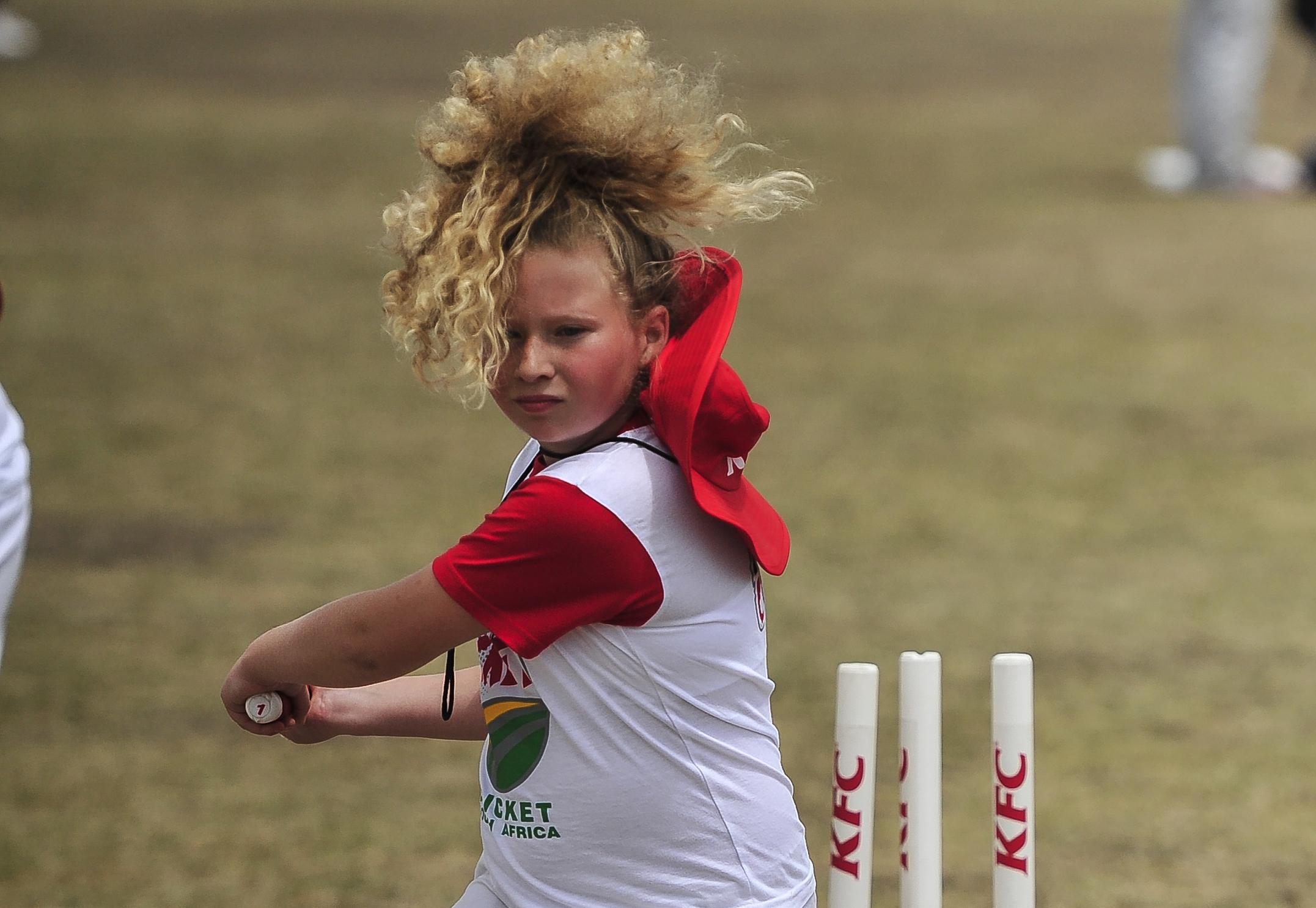
By Emily Norris
Emily Norris speaks to Niels Momberg, Cricket South Africa Youth & Tertiary Cricket Manager, to find out how girls’ school cricket is run in South Africa, and what can be done to improve it.
Girls’ school cricket is still a fairly new concept, and when I was in primary school, I went to an all-girls primary school where there was no cricket whatsoever. Cricket was never a sport that was considered at my school.
I was only introduced to girls’ cricket when I started high school (which was in 2011). Since then, the introduction of girls’ cricket has greatly improved, as more and more primary schools are introducing girls’ cricket.
Momberg stated that girls’ cricket gets introduced through the KFC Mini Cricket Program, to get girls interested in playing cricket from a primary school level already.
“Besides the KFC Mini Cricket Program, schools also have cricket leagues, and CSA also has HUBS and Regional Performance programs which cater for schools in areas that have little or no facilities.
"These programs put a big emphasis on girls’ cricket and many of the girls that are selected for National and Regional tournaments are products of these programs.”
I asked Momberg how girls’ school cricket is run in South Africa and how it can improve, compared to how boys’ school cricket is run.
“Cricket in South Africa is run through Youth Cricket committees in each Member Province in conjunction with the Member Provincial offices.
"Cricket South Africa are in the final stages of an extensive schools systems review. As of 2021, girls’ cricket will mirror boys’ cricket at National and Regional representative levels.
"National tournaments will now be held for girls at U19 and U16 level. There will also be a girls’ U19 Talent acceleration program. This will be the feeder system for the girls’ U19 Team.
"[Besides the tournaments at U19 and U16 level] there will also be Regional girls’ tournaments at U13 and U15 levels. This will create a proper pipeline for girls’ cricket that will mirror the boys’ pipeline and create a system that will strengthen girls’ and women’s cricket to what will hopefully be unprecedented levels.”
Even though the introduction of school cricket, especially girls’ school cricket, has come a long way, there are always ways in which a system or program can improve, and over the years girls’ and women’s cricket can only get better.
I am hopeful that girls’ cricket systems will just keep getting stronger and stronger, and that girls’ and women’s cricket will be treated with the same importance as that of boys’ and men’s cricket.
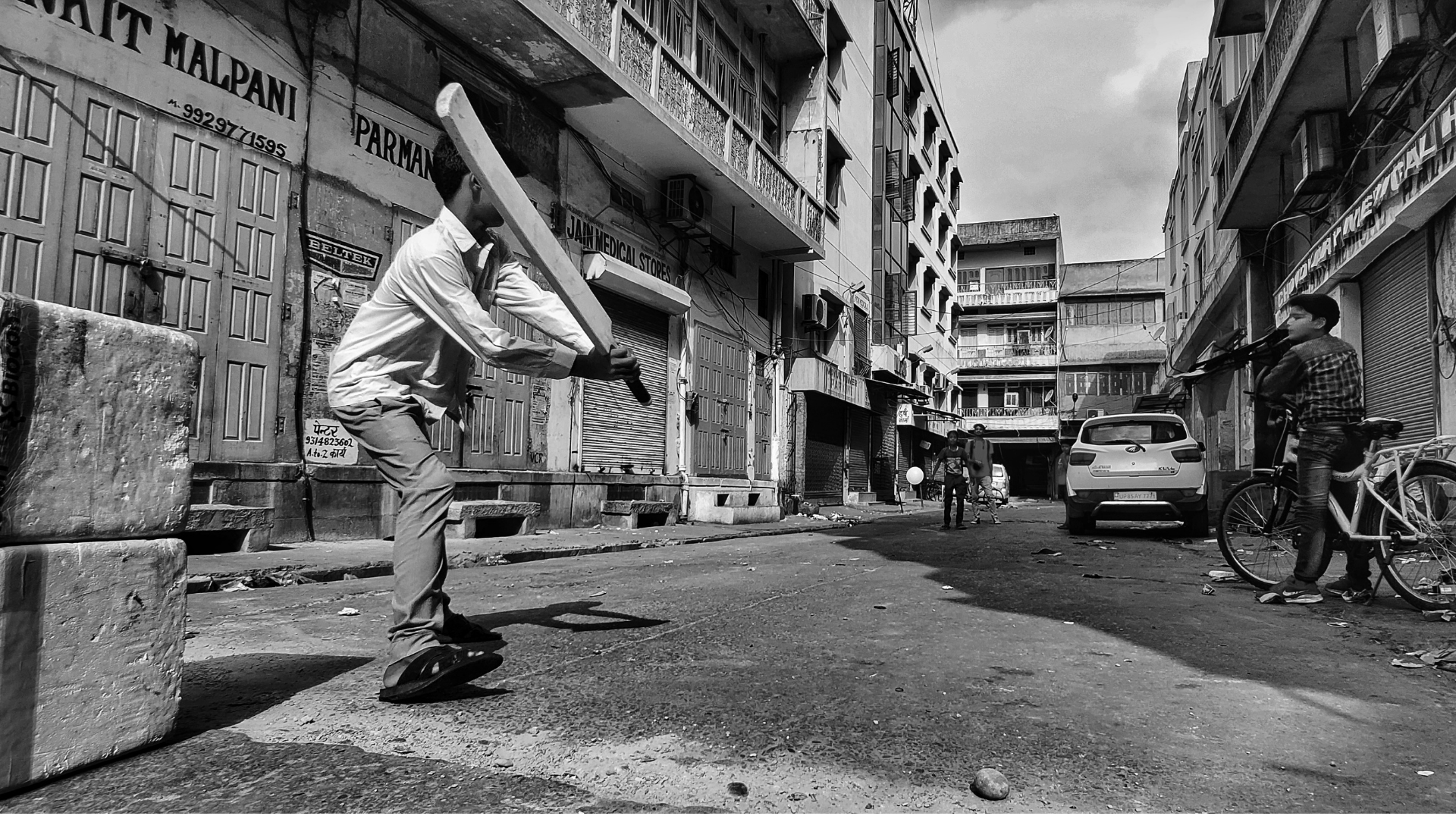
An Overview of Indian Grassroots Cricket
By Aditya Mehta
The development pathways for aspiring cricketers in all cricket-playing nations are important to analyze and review frequently to ensure that the domestic circuit, and ultimately, the national team always have access to the best possible talent.
This article aims to present an overview of grassroots cricket in India, and bridge the gap in the literature on the structure for aspiring cricketers to pursue cricket professionally. Another aim of this piece is to spotlight the best practices in the Indian structure that South Africa could potentially adopt.
Through the course of my research for this article, I found that there is no uniform pathway for an Indian to play cricket at the highest level. Indian cricketers, who succeeded in international cricket, took significantly different roads to the national team, and the nature of their journeys depended on the states they hailed from.
Having said that, the structure that players in Mumbai go through appears to be linear and rigorous in the way it equips cricketers to succeed in professional cricket.
In Mumbai, budding cricketers join private academies, typically run by former cricketers, in their pursuit to play cricket professionally. While young players might represent their schools in inter-school tournaments, their skills are developed and honed at academies.
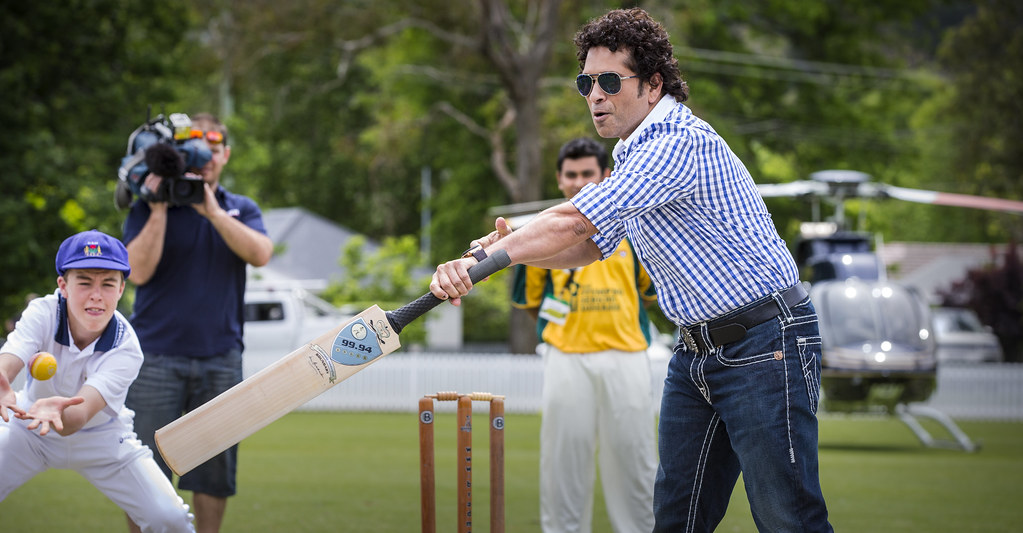
Sachin Tendulkar, who was born and raised in Mumbai, joined Ramakant Achrekar’s academy at the age of 11. Achrekar was a reputed club cricketer, who went on to become a coach. At the time, Tendulkar was studying at the Indian Education Society’s New English School.
On Achrekar’s recommendation, having seen Tendulkar’s blossoming potential, Tendulkar moved to the Sharadashram Vidyamandir High School, which had a strong cricket team.
The players on this team were not necessarily training in school. Like Tendulkar, they acquired their skills through private academies, which they attended outside of their school hours.
The inter-school tournaments in Mumbai are known as the Giles Shield (under-14 cricket) and Harris Shield (under-16 cricket). The Harris Shield and Giles Shield were first introduced in 1896 and 1901, respectively. State team selectors, to this day, continue to monitor performances in the Harris and Giles Shield tournaments.
Legends such as Vijay Merchant, Sunil Gavaskar, Sachin Tendulkar, as well as current cricketers such as Rohit Sharma and Prithvi Shaw cemented their reputations in these tournaments before being considered for Mumbai, and eventually, India.
Sachin Tendulkar became a well-known name in Mumbai cricket circles after he, along with Vinod Kambli, notched a record-breaking 664-run partnership in the Harris Shield semi-finals in February 1988.
The fact that Tendulkar made his Ranji Trophy debut in December 1988, and played for India in November 1989, is a testament to his meteoric rise in Indian cricket.
The Ranji Trophy, India’s domestic first-class competition, conceived in 1934, has been the platform for selection to the Indian team. Since its inception, Mumbai has won the Ranji Trophy 41 times.
Indian legend, Sunil Gavaskar, whose pursuit to play cricket at the highest level began in the 1960s, once said: “Sometimes, it was easier to get picked for India compared to Mumbai.”
Similarly, current Indian Head Coach, Ravi Shastri said: “When I grew up, it was a dream to play for Mumbai. If you could get into a Mumbai team, you’ve done well as a cricketer.”
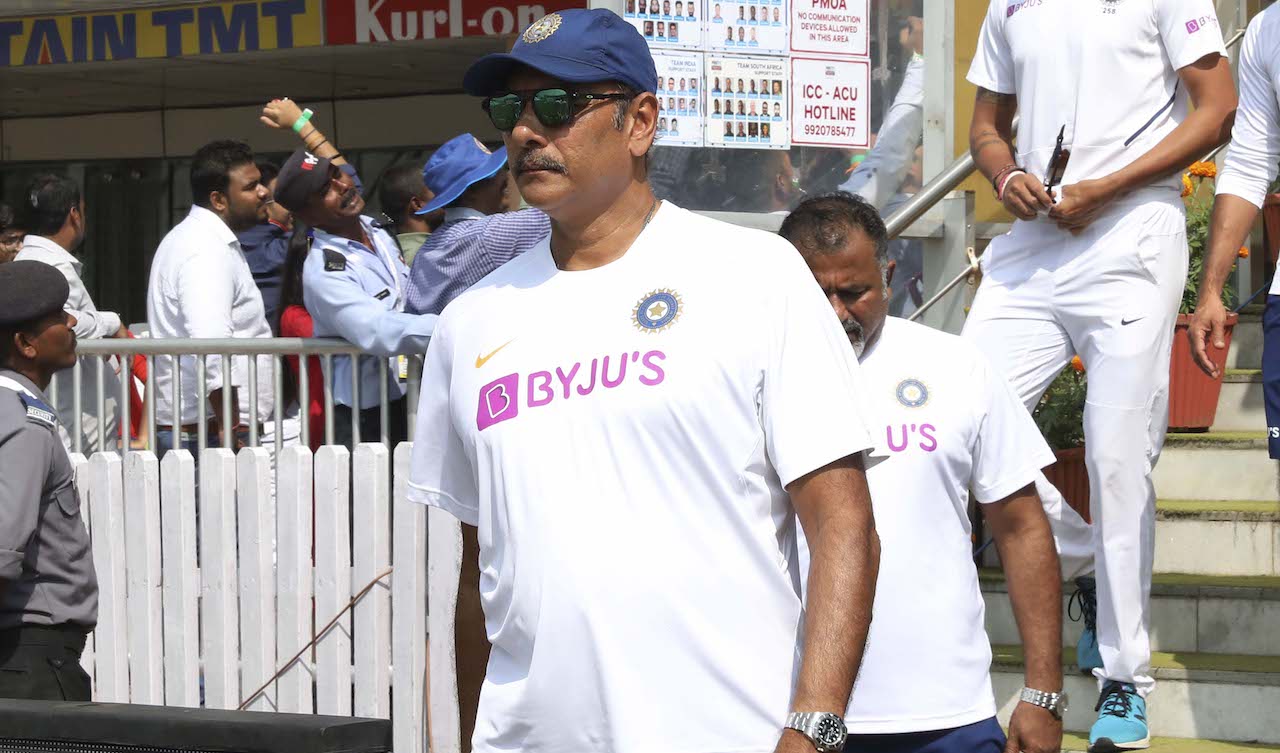
A large part of the reason cricket in Mumbai has been so competitive is that the “maidans” (open grounds) across the city offered a variety of different playing conditions, which helped tighten the techniques of Mumbai’s batsmen.
Additionally, over time, it was embedded in the psyche of the Mumbai cricketer that they have to place a high value on their wickets. Gavaskar said, “Every Mumbai batsman, it was ingrained in him that the minimum value on his wicket is a 100.”
Therefore, it is hardly surprising that a third of all runs scored by India have come from batsmen who were raised in Mumbai.
Another modern-day legend, Virat Kohli, who was born and raised in New Delhi, started playing cricket in the late 1990s.
Like Tendulkar and other cricketers from Mumbai, Kohli discovered his cricketing ability at an academy known as the West Delhi Cricket Academy under his coach, Rajkumar Sharma.
Kohli began his education at the Vishal Bharti Public School but then moved to the Saviour Convent to accommodate his cricket training at the academy.
Having developed his skills at the academy, Kohli rose through the ranks to play at the under-15 level for Delhi in the Polly Umrigar Trophy, followed by under-17 cricket in the Vijay Merchant Trophy.
His success in these two tournaments earned him a spot in India’s under-19 team to England, and ultimately, in Delhi’s team for the Ranji Trophy. Gaining prominence in Indian cricket, Kohli became a well-known name after he led India to victory in the under-19 World Cup in Malaysia in February-March, 2008.
Soon after, he was awarded an IPL contract with the Royal Challengers Bangalore and made his India white-ball debut against Sri Lanka in September 2008.
Kohli’s selection to the Indian team took place in the year the IPL first took world cricket by storm. In the years after 2008, the IPL became a stepping stone for players to represent the national team.
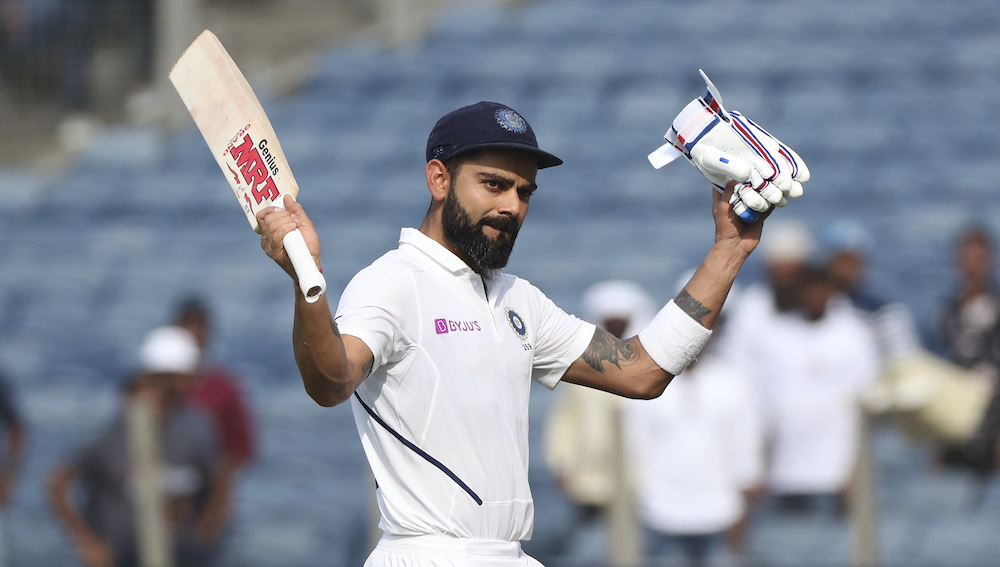
For instance, Hardik and Krunal Pandya, who was born and raised in Surat, Gujarat, moved to Baroda to enrol in former Indian wicket-keeper, Kiran More’s, cricket academy in Baroda.
More had recognized their talents from a young age and gave them a platform to hone their skills. More also happened to be a talent scout for the Mumbai Indians.
While formulating their auction strategy, More recommended the Pandya brothers to the Mumbai Indians think-tank, who secured the services of Hardik Pandya in 2015 and Krunal Pandya in 2016.
Impactful performances in the IPL, in conjunction with consistently remarkable performances in Indian domestic cricket, earned both brothers spots in the Indian national team.
Meanwhile, former Indian international cricketer, Suresh Raina, was born and raised in India’s most populous state, Uttar Pradesh. Having spent his formative years in Ghaziabad, Raina was confident he wanted to play cricket professionally.
At the age of 14, Raina moved to Lucknow to attend the Guru Gobind Singh Sports College, which propelled him towards selection for his state team.
In Uttar Pradesh, state selectors typically keep an eye out for talent coming out of the college, and they were impressed with Raina’s performances. Raina became captain of Uttar Pradesh’s under-16 team, followed by his Ranji Trophy debut at the age of 16, and his ODI debut for India at the age of 18.
In Raina’s case, his first step towards professional cricket was taken at a sports college, as opposed to a private academy.
The stories of the international cricketers highlighted in this article illustrate that the pathway to professional cricket in India varies by state.
In saying that, Mumbai’s linear structure can, perhaps, be a blueprint for grassroots cricket in South Africa to ensure that the Proteas have world-class players coming through domestic cricket, and can remain a force to reckon with in world cricket.
Video Playlist
The Podcast Live Show:
Pakistan Series Playlist
Offside Maidens:
Square-Leg Gully:
Magazine info
Editorial Director
Khalid Mohidin
IT and Technical Director
Faizel Mohidin
Contributors
Aditya Mehta
Abhai Sawkar
Chris Chiwanza
Emily Norris
Jessica October
Janine October
Khalid Mohidin
Lubabalo Skhosana
Marc Jacobson
Obakeng Meletse
Graphics
Khalid Mohidin (Cover and Graphics)
Mohammed Hoosain (CFM logo)
Images
BackpagePix
Video Binge List:
On Lockdown Series
The Podcast Show
Legends with Ravi
Daily Show

